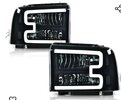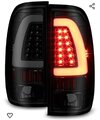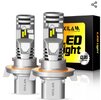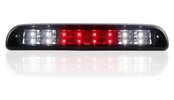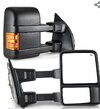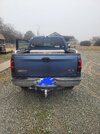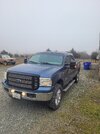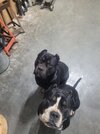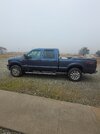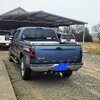The truck didn't seem to pull either direction and I didn't notice any pulsation in the break pedal. But when I would pump the brakes and try to build pressure it wouldn't build any no matter how long I pumped the brakes.
These signs lean me back in the direction of the Master cylinder where the Brake Fluid reservoir resides. Loss of brake action occurs when you have lost containment of the system, or the pressure seals in the system are not working
You seem to get brake pressure, but nearly to the floor - so you may have air in the system - or low fluid - so pull that cap and check, fill as necessary, and then look around for your brother, or family member so they can sit in the Drivers seat and press the brake pedal for you so you can bleed the brakes.
That is only if you crack open the bleeder valves and can't see if fluid burps out.
Then you may have another type of braking problem - dealing with the pushrod that the brakepedal has, is not retracting fully,
This fail to retract problem makes for a pedal that goes to the floor if only to apply some pressure - because the port used to refill that upper chamber that is where the piston pushes against - is not able to open and refill the upper hydraulic side of the Master cylinder.
More than likely it is in the front calipers that these air pockets have formed.
But to get at them, you'll need to make sure your booster is fully hooked up to the vacuum from the Intake Manifold. Vacuum leaks are not fun. The Booster helps to pull the pushrod back out so the cylinder can then fully release into the "at rest" position and open the ports in the system. See if the pushrod will then retract and fluid will get into the brakelines. See if you have a broken hose, start digging.
Because if fluid does not come out when you crack open the bleeder valve - this system is a ":gravity feed" where once ports are open, fluid is pulled thru by it's own weight and pressure from above in the tank for that side of the system. If a line is leaking you'd see fluid below where it was parked.
You don't have that condition, what you have a pedal that nearly has to go to the floor to get the pistons to move enough fluid to apply the pads and shoes. That tells me either you're out of fluid - or you have plugged lines - you wouldn't have brakes if that was the case - or your Master cylinder is out of alignment to the booster it bolts to, affecting the pushrod clearance - and to remove those possibilities, check to make sure you have vacuum in the system to pull the booster back into a resting state to help that push rod do the same - so they both can let fluid enter in so you can re apply the brakes as you need to to get pressure to build. To check for that you'll need to know if the bleeder valves are open and letting fluid escape to prove the ports are aligned.
Last edited:


